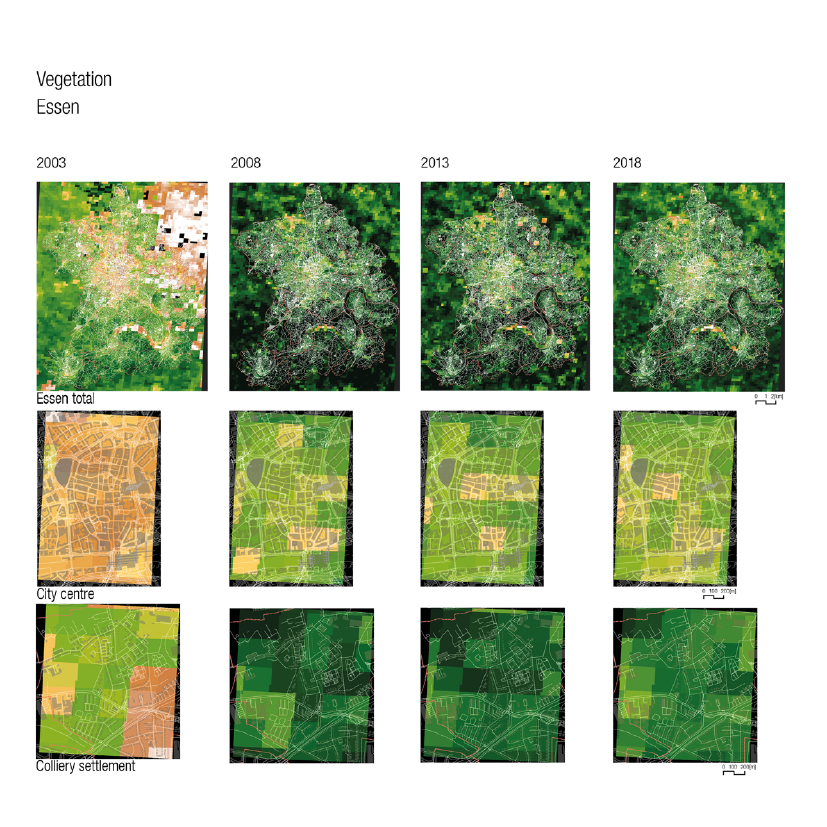DenCITIES Uncharted
A project by Marie-Theres Kewitz, Larissa Böhrkircher and Lea Schwab
Research Module: Urban Density Uncharted
Lecturers: Univ.-Prof. Dipl.-Ing. Christa Reicher and Fabio Bayro Kaiser
winter semester 2020/21
A case study on the interplay of vegetation coverage and urban heat islands in the metropolitan cities of La Paz, El Alto, and Essen
The contemporary world is facing the need for systemic transformation. One of the main factors is urbanization due to population growth and migration to urban areas. It is expected that by 2030, 68% of the world´s population live in cities (UN, 2018). This is a reason to take a deeper look into urbanized areas and one of their indicators: density.
According to the Density Atlas, the measurements of density can include building sizes, dwelling units, land uses, population, ownership data, and others (2011). Planning entities need to consider the density of cities as an indicator for levels of urbanization to develop suitable mitigation and adaptation strategies, averting negative impacts on living standards and planetary health. In recent years, the topic of vegetation coverage in cities became an increasingly important factor. Since global temperatures rise through climate change, especially cities heat up strongly. Therefore, urban heat and vegetation will be addressed in this project.
Urban heating is referred to as Urban Heat Island (UHI) effect and leads to health risks for citizens and other challenges in the urban environment (National Geographic 2011, EPA 2014, Chakraborty & Lee 2019). Vegetation is generally believed to have a positive impact on mitigating the UHI. Studies suggest that loss of vegetation and increasing urban temperatures are highly significant issues related to density that need to be addressed in this regard (National Geographic 2011, EPA 2014, Chakraborty & Lee 2019). Therefore, the upcoming analysis attends the following research question:
„What relations can be derived from the development regarding vegetation coverage and urban heat island effects in the metropolitan cities of La Paz, El Alto, and Essen? “
To assess the impact of vegetation on the urban heat island effects, three contrasting locations in different climatic conditions were chosen for observations. They are located in La Paz and El Alto in Bolivia and Essen in Germany. The focus areas are characterized by a similar urban development, in the sense that they are part of growing agglomeration regions and have been subject to significant structural change in the past and present.




